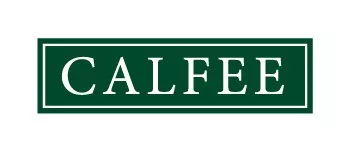- within Intellectual Property topic(s)
- with readers working within the Technology industries
- within Environment topic(s)
- with readers working within the Environment & Waste Management and Utilities industries
Artificial Intelligence (AI) is rapidly reshaping industries, revolutionizing everything from content creation to complex problem-solving. As AI-generated works become more prevalent, novel legal issues concerning ownership and protection of intellectual property (IP) rights have emerged. As we continue our series on rethinking IP in the age of AI, Part Three of this series will explore how copyright law is taking a similar path to patent law in dealing with AI-assisted creations and what creatives looking to protect their efforts involving the use of AI should know. Remember to stay tuned for our next post where we examine how using AI can impact rights in trademarks (Part Four) and be sure to catch up on previous posts in the series (Part One: Patent Rights and Part Two: Trade Secrets).
Copyrights – Replacing Human Creativity or Another Tool to Use?
By way of background, copyright law protects the expression of original works of authorship, including literary, dramatic, musical, and artistic creations such as books, movies, songs, computer software, and architecture. However, copyrights do not protect the underlying facts, ideas, systems, or methods of operation – only the way these things are expressed or arranged. For works created by individuals today, U.S. copyright protection generally lasts for the life of the author, plus 70 years. For anonymous works, works made under a pen name (i.e. pseudonymous), or works made for hire, the duration is either 95 years from publication or 120 years from creation, whichever is shorter. While common law copyright protection automatically applies to original works of authorship once they are fixed in a medium (such as written on paper, saved on a computer, etc.), a federal registration must be obtained before any lawsuit enforcing these rights can be filed. Generally speaking, filing registration soon after finalizing or publishing your work often provides stronger remedies that might not be available if you wait until somebody begins to copy a work, so consider talking with your Calfee IP attorney early in the process if you have questions about how, when or whether to file a federal registration for your creative work.
On one hand, there is a long line of cases demonstrating the importance of human involvement in protectable copyrighted works. For example, in Naruto v. Slater, the Ninth Circuit Court of Appeals held that a photographer whose camera was left unattended was not entitled to copyright protection in a selfie taken by Naruto the monkey using the photographer's camera. Similarly, the Urantia Foundation, a religious organization that compiled and published a book of revelations purportedly authored by "non-human spiritual beings" could protect the compilation it made (i.e., how those revelations were arranged) but not the individual spiritual revelations. On the other hand, it is possible to use technology, like Photoshop software or cameras, as tools to author works of human creativity.
Similar to inventorship in patents, the U.S. Copyright Office advises that AI cannot be listed as an author or co-author on copyright applications. While the resulting output (image, text, video, etc.) of AI systems is generally not entitled to protection where human effort is limited to drafting the prompt to generate it, other "human authored" aspects of work done relative to these unprotectable AI outputs can be protected, including: (1) human-made modifications to the AI output, potentially including human-directed AI modifications where authorial control extends beyond mere prompting (e.g., techniques like "in painting"); or (2) sufficiently creative human effort in selecting and arranging AI-generated work in a compilation. So, if you first prompted an AI model to generate images for your comic book, and then you chose/arranged the images and wrote the dialogue for the story, the images themselves would not be protectable but the story writing and arrangement of images/text probably are as a compilation. Similarly, you can use AI to help brainstorm or organize ideas where you do not incorporate the output into your later creative efforts. It is also possible to utilize certain tools to constrain AI-output to a reference image that you authored, increasing the likelihood that a registration could be obtained, provided that you disclaim "any non-human expression" appearing in the resulting work. Copyright applicants must also be sure to indicate whether and how AI was used in creating any aspects of their submissions and describe the human author's contributions to the work – failure to do so risks losing copyright protection.
Even though AI-generated output alone generally doesn't qualify for copyright protection, it might still violate the valid copyrights of others. Because AI models are trained on vast amounts of data (some of which may be covered by existing copyrights), their output may contain copyrighted material. Accordingly, to the extent AI output might "reproduce the copyrighted work,"; "prepare derivative works based upon the copyrighted work," or otherwise infringe on the exclusive rights of copyright owners, your possession/use of the infringing outputs may be sufficient for liability. Steps that can be taken to mitigate this risk include careful review of AI outputs, obtaining permission from the copyright owner, limiting use of AI systems to those trained exclusively on materials in the public domain, or by obtaining contracts to shift liability for any copyright infringement to the company providing the AI software.
Key Takeaways
Patents and copyrights generally require significant human involvement in the creative aspects that these areas of IP seek to protect and incentivize. When using AI models creatively, careful attention to the inputs provided to AI and the corresponding outputs can make all of the difference in preserving your rights. As always, it is important to consider how using AI can impact your rights to secure new IP, and how it might infringe on the rights of others.
If you have any questions or concerns about how using AI can impact your property rights or increase your risk of infringing the rights of others, contact one of the attorneys in Calfee's IP practice. We are excited to help you responsibly embrace these new and exciting technologies while avoiding the potential pitfalls this powerful new technology brings.
Series: Rethinking IP in the Age of AI
Part One: A New Frontier for Patent Law by Michael E. Glennon and Bradley S. Pulfer
Part Two: Trade Secrets – To Disclose or Not to Disclose by Michael E. Glennon and Bradley S. Pulfer
Calfee has one of the largest Intellectual Property and Information Technology practices within a general practice firm in the Midwest. Of the 40+ skilled attorneys, patent agents, and paralegals in Calfee's Intellectual Property practice, more than 30 are registered to practice before the U.S. Patent and Trademark Office. Calfee has nearly 25,000 active patents and trademarks on its dockets, more than 15,000 of which are international. The IP team has handled filings in 190+ countries and has broad experience and a deep bench in prosecution, litigation, opinions, IP business strategy, and counseling.
Calfee, Halter & Griswold LLP is a full-service corporate law firm with 160 attorneys and professionals in five offices in Cleveland, Columbus, and Cincinnati, Indianapolis, and Washington, D.C. Calfee serves clients in the Midwest, nationally and globally in the areas of Corporate and Finance, Employee Benefits and Executive Compensation, Energy and Utilities, Estate and Succession Planning and Administration, Government Relations and Legislation, Intellectual Property, Investment Management Law, Labor and Employment, Litigation, and Real Estate Law. Calfee has been recognized as a leading law firm by Chambers USA 2025 in Antitrust, Banking & Finance, Construction, Corporate/M&A, Employee Benefits & Executive Compensation, Energy & Natural Resources, Environment, Government Relations, Insurance, Intellectual Property, Investment Funds: Regulatory & Compliance, Labor & Employment, Litigation: General Commercial, Litigation: White-Collar Crime & Government Investigations, and Real Estate, and by Chambers HNW 2025 in Private Wealth Law. A founding member ofLex Mundi, Calfee offers international representation through a network of independent law firms with access to 22,000 attorneys located in more than 125 countries. Additional information is available at Calfee.com.
The content of this article is intended to provide a general guide to the subject matter. Specialist advice should be sought about your specific circumstances.



